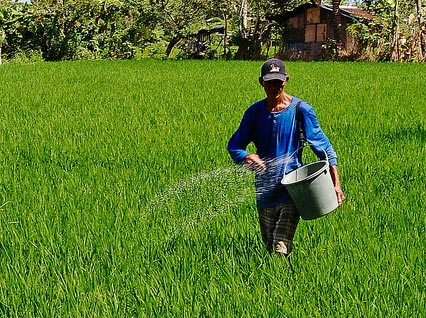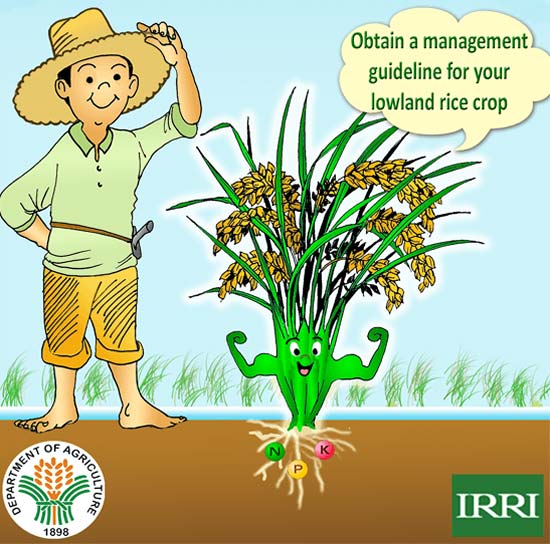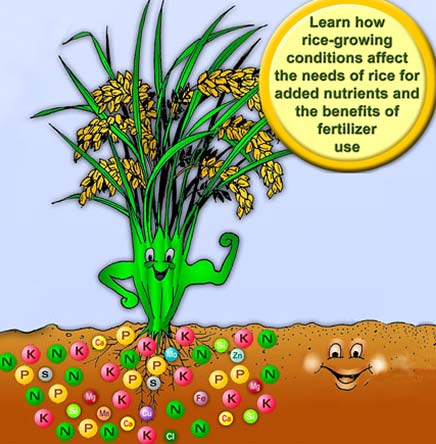How to manage soil fertility
Applying nutrients to the crop is essential in managing soil fertility so the plants grow and develop normally. A number of crop problems can be related to inefficient management of nutrients and nutrient imbalances in the field.
Site-Specific Nutrient Management
 Site-specific nutrient management (SSNM) enables farmers to dynamically adjust fertilizer use, by supplying optimum amounts of nutrients at critical time points in the crop's growth to produce high yields.
Site-specific nutrient management (SSNM) enables farmers to dynamically adjust fertilizer use, by supplying optimum amounts of nutrients at critical time points in the crop's growth to produce high yields.
In SSNM, farmers tailor their nutrient management strategy to the specific conditions of their field.
The following are steps in SSNM:
 Establish an attainable yield target
Establish an attainable yield target
Identify estimated yield based on location and season. Consider factors such as climate, rice cultivar, and crop management.
The yield target determines the total amount of nutrients that must be taken up by the crop.
 Effectively use existing nutrients
Effectively use existing nutrients
Indigenous nutrients which comes from the soil, along with organic materials, crop residues, manures and irrigation, need to be managed properly to achieve optimal crop nutrient uptake.
 Apply fertilizer to fill in other nutritional needs of the crop
Apply fertilizer to fill in other nutritional needs of the crop
NPK fertilizers are applied to supplement indigenous nutrients.
The quantity of application is determined by the target yield and the amount of nutrients needed by the crop.
To assess the crop's nutrient needs, use the Leaf Color Chart.
Crop Manager
Rice Crop Manager
 Rice Crop Manager (RCM) is a computer- and mobile phone-based application that provides extension agents and farmers with advice on crop and nutrient management matching their particular farming conditions.
Rice Crop Manager (RCM) is a computer- and mobile phone-based application that provides extension agents and farmers with advice on crop and nutrient management matching their particular farming conditions.
Location-specific guidelines are currently available in Bangladesh, China, India, Indonesia, the Philippines, and West Africa.
Nutrient Teacher for Rice
 Nutrient Teacher for Rice is a teaching tool on RCM. This app is made for students and instructors of introductory courses in soil science and crop science. It can also be used by researchers.
Nutrient Teacher for Rice is a teaching tool on RCM. This app is made for students and instructors of introductory courses in soil science and crop science. It can also be used by researchers.
It shows how information on season, crop establishment, variety, growth duration of rice, yield, residue management, soil fertility, and use of organic materials as sources of nutrients affect rates of nitrogen (N), phosphorus (P), and potassium (K) fertilizer.


